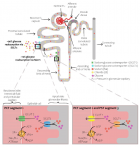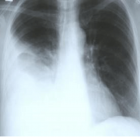About Inonu University
Inonu University
Articles by Inonu University
Primary Cutaneous Lymphomas and Interferon Treatment
Published on: 9th January, 2017
OCLC Number/Unique Identifier: 7355942281
Primary cutaneous lymphomas (PCLs) are the second most common group of extranodal non-Hodgkin lymphomas (NHL) with an estimated annual incidence of 1/100.000. Interferons (IFNs) are used in mono or combination therapy for cutaneous lymphomas especially for cutaneous T-cell lymphomas (CTCL) for years. IFN-α is the most widely-used type for cutaneous lymphomas. IFN-α has been shown to be a highly active agent in CTCL with response rates ranging from 40% to 80%. In this review, the current information about PCLs and IFNs treatment is summarized.
Effects of KCl (rpm/Heat) on Bacterial Protease Production in E. coli, P. aeruginosa and E. faecalis
Published on: 11th September, 2018
OCLC Number/Unique Identifier: 7850270857
Background: Proteases are a group of enzymes that catalyze the cleavage of peptide bonds in proteins found in nature. Microbial protease constitutes one of the most important for industrial aplications. Proteases play a crucial role in numerous pathologic processes as well. KCl is an unnatural salt. The purpose of this study was to examine the effect of this salt on protease production under different agitation and heat conditions.
Methods: The effects of KCl (rpm/heat) on the production of a protease, of E. coli, P. aeruginosa and E. faecalis strain, were investigated. The decrease in protease production at 37 °C was also observed in this work that proved that heat plays a major role in enzyme production.
Results: The presence of KCl also caused a decrease in protease production in three bacterial species. The use of KCl appears to be a viable alternative when it is necessary to reduce protease activity outside of industrial applications (such as health care). This unique property makes it attractive and useful to be used in health industries. In the future we think that it will contribute to clarification of the matter in this way.
Treatment protocol with alternative iron drugs in patients with an allergic reaction during iron replacement therapy
Published on: 1st February, 2023
In our study, we aimed to show that alternative iron salts containing different additives are safe to use in patients who have type 1 hypersensitivity reactions to iron drugs and need iron replacement therapy.Materials and methods: Between January 2022 and June 2022, patients who had previously developed type 1 hypersensitivity reactions with iron preparations and needed iron replacement were included in the study. The study was designed retrospectively. Skin tests were first performed on patients to demonstrate a type 1 hypersensitivity reaction. If skin tests were negative and there was no history of life-threatening anaphylaxis, oral provocation tests were continued. If the absence of variability in symptoms and perimeter values, the drug allergy test was considered negative. Results: Twenty-two patients were included in the study. Twenty-one of the patients were female and one was male. Iron deficiency anemia was found in nine patients, and low iron stores in thirteen patients without anemia were found. Type 1 hypersensitivity reaction developed with Iron 3 Carboxymaltose in 7 patients, Iron 2 Sulfate in 5 patients, Iron 2 Glycine in 4 patients, Iron 3 Hydroxy Polymaltose in 4 patients, Iron 2 Fumarate in 1 patient and Iron 3 Hydroxide Sucrose in 1 patient. Allergy tests with all alternative iron drugs containing additional additives were negative.Conclusion: If patients with allergic reactions cannot be referred to allergy clinics, we think that oral iron salts with different additives can be used after the first dose is given in the hospital under general anaphylaxis precautions. We show that oral iron salts containing different additives can be safely used.
To Examine the Effects of Risk Factors Associated with Kidney Stones in Determining the Disease by Considering their Combinations
Published on: 28th November, 2023
Aim: Kidney stone disease, which can affect people of all ages and whose incidence increases day by day, is becoming a public health problem due to treatment costs. This study aims to determine how factors related to kidney stones affect the diagnosis of the disease when taken together, rather than determining their relationship with the disease one by one.Materials and methods: An open-access dataset containing kidney stone status and associated factors was used in the study. Mann Whitney U test and independent sample t-test were used in data analysis. Logistic regression was performed with the backward variable selection method to determine the factors associated with kidney stones. ROC analysis was used to determine the power of the variables that were significant as a result of logistic regression analysis, individually and together, in discriminating kidney stones.Results: According to the results of logistic regression analysis, gravity, cond, and urea calc variables were found to be associated with kidney stones. With ROC analysis, it can be said that urea, calc, and gravity variables with AUC values above 0.60 can distinguish kidney stones. When the combinations of these variables are examined, the AUC values of the binary combinations are between 0.734 and 0.759, while the AUC value obtained for the triple combination is 0.831.Conclusion: According to the results obtained from the article, it can be said that while the factors associated with the disease and used in the diagnosis have little effect on the diagnosis of the disease alone based on the AUC values obtained from the ROC analysis, it can be said that considering them together increases the accuracy in diagnosis. Therefore, considering the factors thought to be associated with the disease together may be more appropriate in diagnosis and may give more accurate results.

If you are already a member of our network and need to keep track of any developments regarding a question you have already submitted, click "take me to my Query."


















































































































































